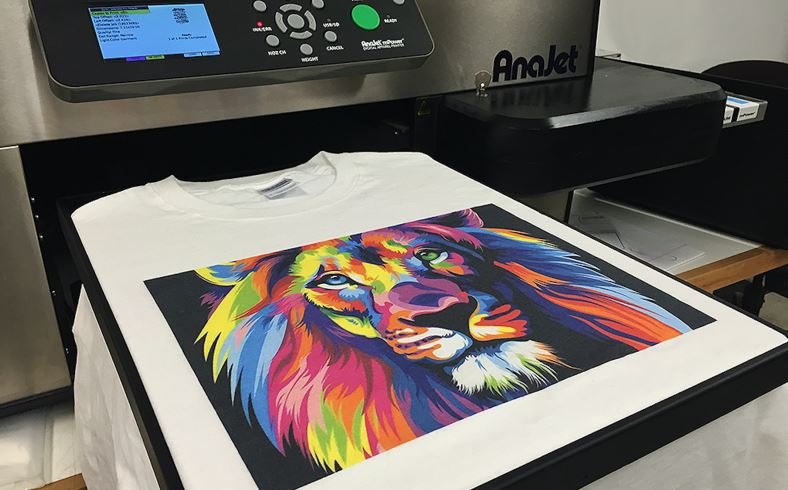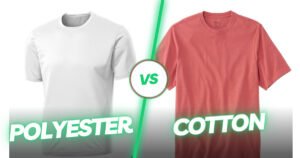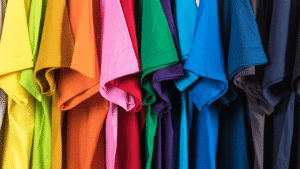Technical Comparisons of Apparel Printing Technologies and Process
Choosing the right apparel printing techonologies for your custom clothing, customized t-shirts, mugs, and accessories is the single most important decision you will make outside of design. The technique determines the final cost, durability, color vibrancy, and even the type of fabric you can use. Misalignment between your design and the printing process can result in a quick-fading, rigid, or uneconomical product.
This comprehensive guide breaks down the technical comparisons of the industry’s four leading apparel printing technologies, Screen Printing, DTG, DTF, and Sublimation to help you answer the crucial question: when to use DTG vs sublimation, and where do techniques like screen printing vs vinyl transfer fit in for modern commerce?
1. Screen Printing: The Durable Workhorse
Screen printing is the oldest one of the most trusted apparel printing technologies in the industry. It involves pushing thick ink through a stencilled mesh screen directly onto the fabric.
Technical Process and Applications
- Process: Each color in the design requires its own dedicated screen, which is burned with the artwork. Ink (usually Plastisol or water-based) is pulled across the screen using a squeegee, forcing the color through the mesh and onto the garment. The print is then cured at high heat (around 320°F) in a conveyor dryer.
- Core Strength: Durability and color vibrancy, particularly on dark fabrics. Plastisol ink sits on top of the fabric and is highly resistant to cracking and fading.
- Cost Factor: The majority of the cost is in setup time (creating the screens). This makes it prohibitively expensive for small runs but extremely economical for large volumes.
- When to Choose Screen Printing: When your order is 50+ units, your design uses fewer than five colors, and durability is paramount (e.g., work uniforms, event merchandise).
Screen Printing vs. Vinyl Transfer
When comparing screen printing vs vinyl transfer, screen printing offers superior longevity and a softer feel, especially for complex designs. Vinyl (heat transfer vinyl or HTV) is essentially plastic cutouts that are heat-pressed onto the shirt. Vinyl is best for simple lettering, numbering, or single-color graphics on athletic wear, but it does not breathe and is prone to cracking or peeling after 20-30 washes. Screen printing, when done with a soft-hand additive, feels much softer on the fabric.
2. Direct-to-Garment (DTG): The Photographic Detail King
DTG is essentially an oversized inkjet printer for textiles. It sprays water-based inks directly onto the fabric, creating intricate, full-color designs.
Technical Process and Applications
- Process: The garment is pre-treated with a chemical solution to bond the ink to the cotton fibers. The shirt is loaded onto a platen, and the machine prints the image directly onto the fabric, much like a paper printer. For dark shirts, a layer of white ink is printed first as a base to ensure the colors pop. The design is then cured with a heat press.
- Core Strength: Unlimited color palette and high-resolution detail. DTG can print photographic images and complex gradients seamlessly.
- Cost Factor: The cost is consistent regardless of the number of colors, making it ideal for low-volume, high-color count orders.
- Fabric Limitation: DTG prints best on 100% cotton garments. While blends are possible, the results on polyester can be poor without specialized inks.
- When to Choose DTG: For low-volume orders (1–20 units), highly detailed artwork, and designs with photographic or gradient elements where the design complexity makes screen printing too costly.
3. Direct-to-Film (DTF): The Modern Hybrid Solution
DTF is the newest contender in apparel printing technologies, merging the high detail of DTG with the durability of a transfer film. It involves printing a design onto a film, applying an adhesive powder, and then heat-pressing the finished transfer onto the garment.
Technical Process and Applications
- Process: The image is printed (often in reverse) onto a PET film using DTF-specific water-based inks. A powdered adhesive (hot-melt powder) is applied to the wet ink and cured. The finished, flexible transfer is pressed onto the fabric at high heat, and the film is peeled away, leaving the design bonded to the textile.
- Core Strength: Fabric Versatility and Durability/Flexibility. DTF works exceptionally well on cotton, polyester, nylon, and various blends, offering high stretch and crack resistance.
- Cost Factor: Competitive for small to mid-range runs (10–50 units). It often replaces DTG for poly/blended fabrics and small screen print orders.
- Feel Factor: The print has a slightly noticeable, rubbery texture, as it sits entirely on top of the fabric (similar to vinyl, but softer and stretchier).
- When to Choose DTF: For orders requiring complex, full-color designs on non-cotton fabrics (e.g., technical sports apparel, nylon bags) or when seeking high detail without the setup costs of screen printing.
4. Sublimation: The Immortal Print for Accessories
Sublimation is a chemical process that transforms solid ink directly into a gas, which then bonds with the polyester fibers of a garment or the polymer coating on an accessory. It is crucial to understand when to use DTG vs sublimation. They are fundamentally different and non-interchangeable. This is one of the most used apparel printing technologies in printing industry.
Technical Process and Applications
- Process: The design is printed onto special transfer paper. This paper is placed on the item and heated to a high temperature (370°F to 420°F). The heat converts the dye into a gas, which permeates the polyester fibers or polymer coating. When it cools, the dye becomes a solid, permanently integrated into the material.
- Core Strength: Permanence and Impeccable Feel. Because the ink is in the fabric rather than on it, the print will never crack, peel, or fade. It is literally part of the material.
- Fabric Limitation: Must be applied to polyester (>50%) or polymer-coated items. It does not work on cotton.
- Color Limitation: Sublimation dyes must be darker than the material they are applied to. It only works on white or very light-colored garments/accessories.
- When to Choose Sublimation: For customized mugs, phone cases, metal items, or polyester sports jerseys where you need a vibrant, permanent, full-color print that is impossible to feel.
Technical Comparison Matrix: Cost, Quality, and Use Case
To formalize the decision-making process for your custom clothing business, here is a technical matrix comparing the critical factors across the four apparel printing methods.
| Feature | Screen Printing (Plastisol) | DTG (Direct-to-Garment) | DTF (Direct-to-Film) | Sublimation (Dye-Sub) |
|---|---|---|---|---|
| Best Run Size | High Volume (50+ units) | Low Volume (1-20 units) | Mid-Volume (10-50 units) | Any Volume (Per-unit cost consistent) |
| Color Palette | Limited (1–8 colors typically) | Unlimited (Photographic Detail) | Unlimited (Photographic Detail) | Unlimited (Photographic Detail) |
| Cost Driver | Setup Time (Screens/Jigs) | Ink Usage (High for dark shirts) | Material Cost (Film/Adhesive) | Time/Heat Cycle |
| Ideal Fabric | Cotton, blends, some synthetics | 100% Cotton | Any fabric (Cotton, Poly, Nylon) | 100% Polyester or Poly-Coated |
| Durability | Excellent | Good (Can fade slowly) | Excellent (High stretch/crack resistance) | Permanent (Never fades/cracks) |
| Feel/Hand | Heavy to Soft (Depends on ink type) | Very Soft (Ink absorbs into fabric) | Slightly Rubbery/Flexible | Zero Hand (Imperceptible) |
| Special Use Case | Bulk economy, simple logos | Complex graphics on cotton | Hard-to-print fabrics (Nylon/Poly Blends) | Customized Mugs and hard accessories |
Industry Fact: Wash Fastness and Abrasion
A study comparing apparel printing technologies confirmed that properly cured Screen Printing and Sublimation achieve the highest wash fastness (AATCC standards), often lasting 50+ wash cycles without significant degradation. DTF follows closely due to its robust adhesive. DTG, while offering great detail, typically shows noticeable fading after 30-40 washes due to the direct absorption of water-based ink into the cotton fibers.
Final Decision Framework for Your Business
By understanding the technical trade-offs between screen printing vs vinyl transfer (Screen wins for volume and quality) and when to use DTG vs sublimation (DTG for cotton, Sublimation for poly/mugs), you can ensure every dollar spent on custom apparel is maximized for quality and branding effectiveness.
- For High-Volume, Simple Logo Orders: Choose Screen Printing for maximum economy and durability.
- For Small Runs of Complex Cotton T-Shirts: Choose DTG for the best detail and softest feel.
- For Polyester, Nylon, or Blend T-Shirts/Bags: Choose DTF for superior adhesion and versatility.
- For Mugs, Phone Cases, or Jerseys: Choose Sublimation for permanent, non-feel prints.
The correct use of apparel printing techologies is an extension of your brand promise. By aligning your technology with your product’s purpose, you guarantee a high-quality finished product that lasts.



